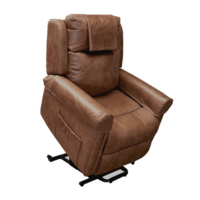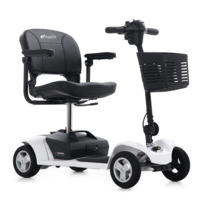What To Do With Mobility Equipment When You No Longer Need It?
Please note that MobilityHQ and Aidacare do not have a license to take on second-hand goods.
Mobility equipment, aids and furniture can play an integral part in living an independent life for many people. When it comes time to part ways with your old mobility equipment, it’s important to do so with care.
You may be able to sell or donate mobility equipment in good working order to someone in need. Some places may even accept items that need repairing so they can be passed on to someone else. But there are times when mobility equipment can no longer be used and it must be disposed of properly.
Assessing the condition of your mobility equipment
Before you can decide what to do with your old mobility equipment, it’s important to assess its condition. Consider the following:
- Functionality - is the mobility equipment still operational and usable. Are all the parts intact? Is the material clean, with no rips or tears?
- Safety - does the equipment meet current safety standards? Has it been properly cared for or stored? Are there any safety risks to using the equipment?
- Usability - is the mobility equipment suitable for use by someone else? Can it be properly cleaned and sanitised for a new user?
Try to be realistic in your assessment of your old mobility equipment. While many items can be easily and readily passed on, not everything is suited for use by a new owner.
Selling your old mobility equipment
If your mobility equipment is still in good condition, you could sell it to a new user and make a bit of money in the process.
Your best option is to list it online. There are a number of places that help people buy and sell second hand mobility equipment online:
- Facebook groups such as Disability Equipment Buy/Swap/Sell Australia and Disability And Special Needs Equipment Australia Only Buy Sell Swap Or Free
- General online marketplaces like Facebook Marketplace, Gumtree and eBay
- Specialised mobility aids marketplaces such as eBility
Before listing your items for sale, make sure you familiarise yourself with the rules of your chosen marketplace or platform. Provide clear photos and a description to show the condition of your item along with any important information such as measurements.
Take care when speaking with strangers online. While most online transactions will go smoothly, be aware of anyone offering more than your asking price or suggesting a third-party platform to communicate on.
Finally, make sure that you take a pragmatic approach to selling your item. While you may have spent quite a bit of money on it, it may not be worth all that much second hand. If it’s not in great condition or it’s an older model, you may have to lower the price quite a bit. And consider if your time is worth the bother of messaging with potential buyers and having to arrange meetings for people to inspect your item.
Donate your old mobility equipment
The reality is that mobility equipment can be expensive, even with subsidies and funding. Many organisations accept donations of mobility equipment in good, usable condition to provide to people who are unable to buy them.
While op shops will readily accept some items, they may not have the connections or resources to make sure more specialised equipment gets into the hands of people who really need it.
A search online will show what organisations are accepting donations of second hand mobility equipment in your area. Some of these may include:
Rotary Club - The Rotary Aiding Mobility Program (RAMP) accepts donations of wheelchairs, walkers, crutches, over-toilet seats and more. Secondhand items are then provided to people in need via physiotherapists, occupational therapists, community nurses and carers. They also send secondhand items overseas to countries where mobility equipment isn’t as readily available or affordable.
Local healthcare providers - You could also reach out directly to your local healthcare providers or businesses to see if they will accept donations of second hand mobility equipment on behalf of their clients.
Recycling and disposal of old mobility equipment
If your mobility equipment is old, damaged or simply no longer able to be used, then recycling or disposal is the best option.
What you can do with it will depend on its size, materials and your local waste management options. Batteries, in particular, should not be sent to landfill and instead need to be disposed of with care. Metals, hard plastics, electronic components and so much more can now be recycled and turned into something new.
Your first step will be to contact your local recycling centre and ask them what items they accept and how you can get it to them. Most councils in Australia offer some kind of hard rubbish collection for large goods. You can then arrange for those items to be taken away and responsibly disposed of.
When it's time to part with your old mobility equipment, you have several options. By either selling, donating or recycling, you can make a positive impact on both the environment and people in need.



























